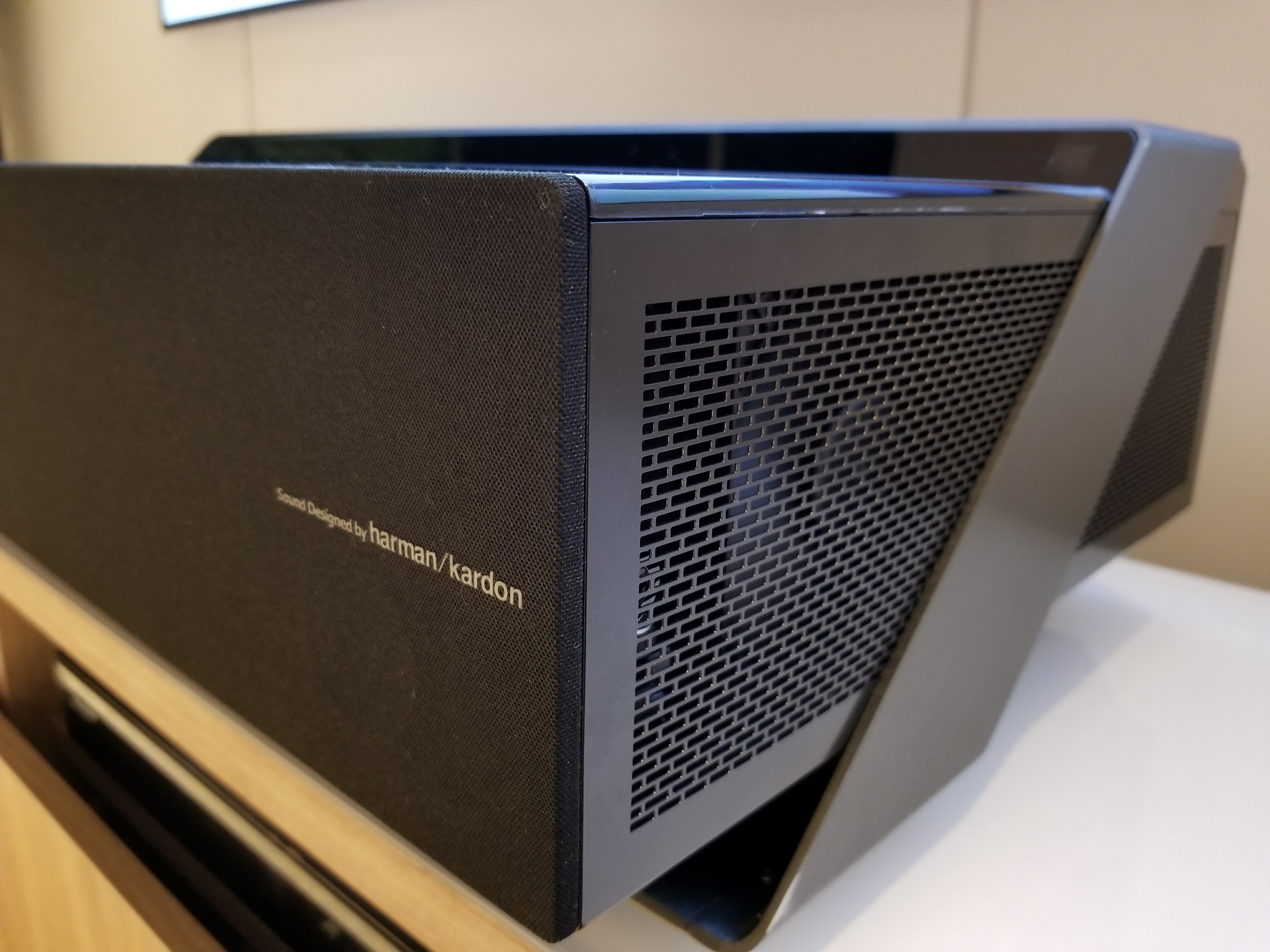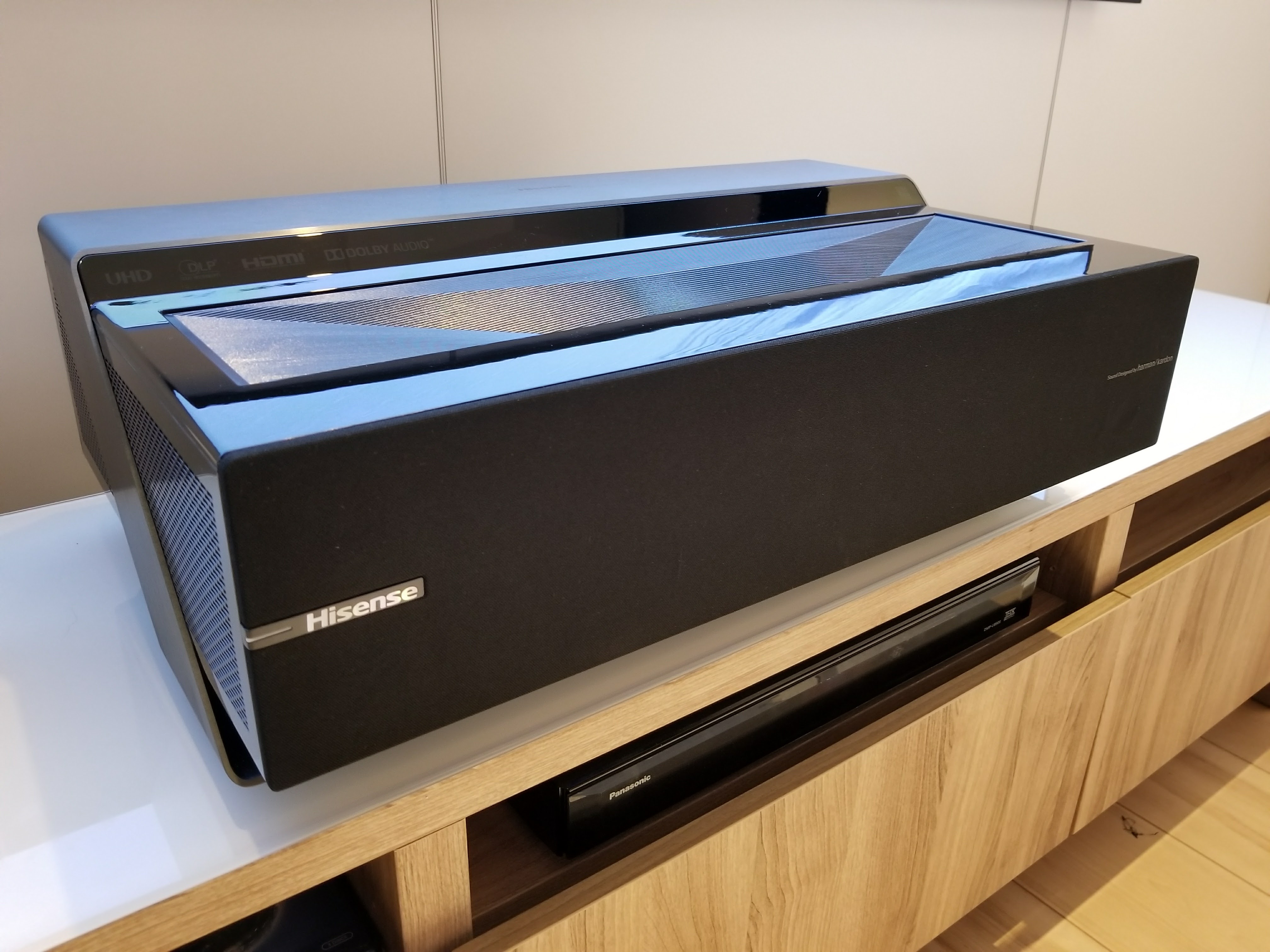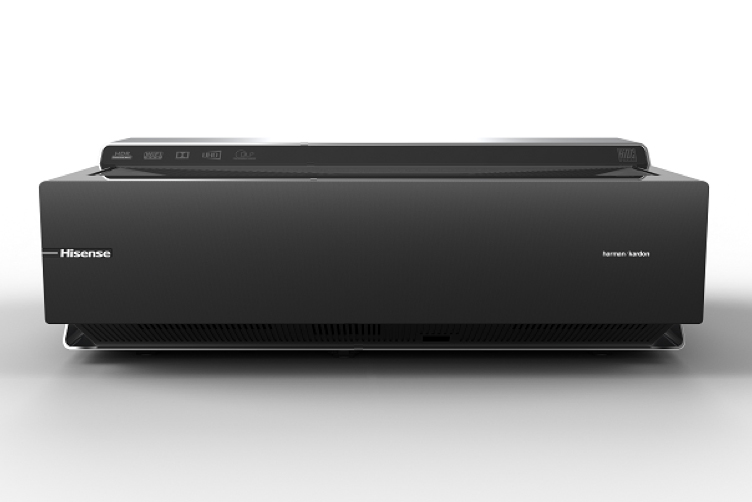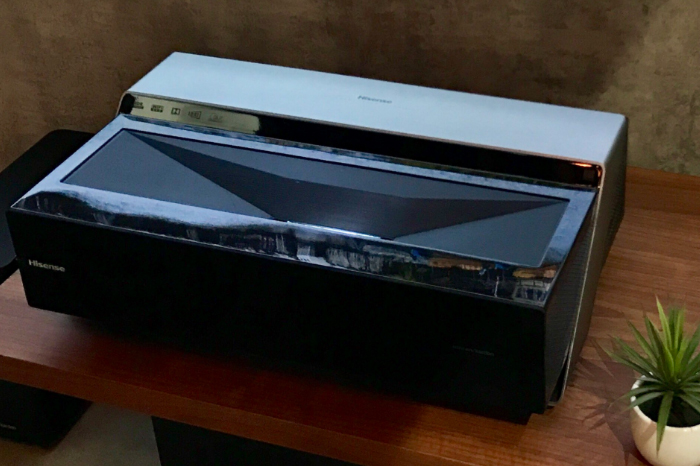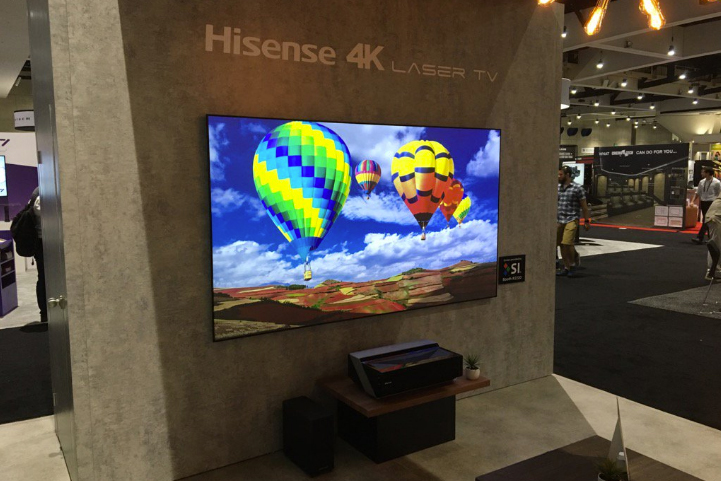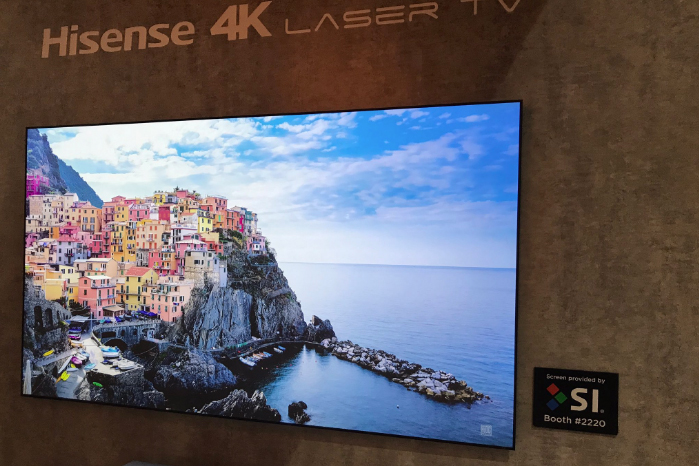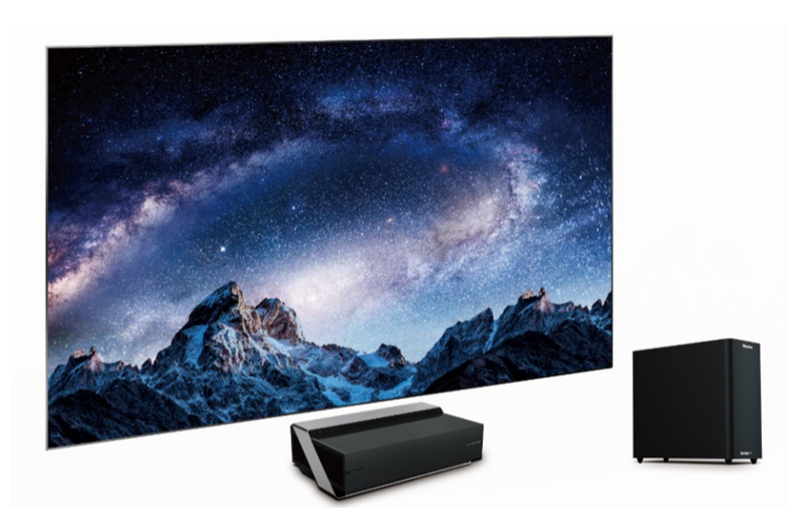The NYC event took place at the retail home of high end audio brand Harman Kardon, which will make the built-in 2.1-channel audio system in the product. Hisense says it will push out 110 watts, which should make for decent sound. More interesting is the overall idea behind the 100L8D Laser TV — something Hisense calls a “market-creation” product — which is meant to serve those who want a big-screen experience without the hassles and limitations associated with conventional front-projection systems.
Utilizing an ultra-short throw lens, the heart of the 100L8D Laser TV can be positioned mere inches below an included 100-inch Screen Innovations Short Throw screen, presumably placed alongside all connected components. The 100L8D’s laser light source is rated for 20,000 hours and puts out an impressive 3,000 ANSI lumens, while the projector’s Texas Instruments DLP engine delivers 4K Ultra HD resolution with high dynamic range (HDR10) support bright enough to do battle with well-lit rooms.
The included projection screen has a matte finish, so glare from outside light sources is essentially eliminated, and it is extremely light — much lighter than similarly sized TVs — thus no reinforcement is needed to mount it. Another benefit is that no wires need to be run up the wall, and power does not have to be supplied behind the screen. Because the screen is optimized for high reflection of light for a bright image, the viewing angle is somewhat limited, though not nearly as much as conventional LED TVs.
The projector includes just two HDMI inputs, which limits the potential number of connected devices such as Blu-ray players and cable/satellite boxes, but Hisense’s own smart TV interface is built in for access to streaming apps like Netflix, Vudu, and others. A coaxial cable connection is supplied for those who wish to connect an antenna, but Hisense also points to the availability of the Tiki Live app, which promises streaming versions of some local broadcast channels.
For sound, the 100L8D Laser TV has two midrange drivers and two tweeters, each powered by 15-watt amplifiers, built right into the projector — previous prototypes had placed the speakers in a separate sound bar, which bulked up the installation. Harman Kardon supplies the sound tech here, which also includes a 60-watt 8-inch subwoofer to cover the low end. If an A/V receiver is used with the 100L8D Laser TV, the built-in speakers will double as a center channel.
Hisense hasn’t furnished a release date for the 100L8D Laser TV yet, but talks with representatives at CEDIA indicate the product should be available in the next few months.
Editors' Recommendations
- Hisense’s PX3-Pro Laser Cinema gets AI, a bigger picture, and better sound
- Hisense shows off massively bright 98- and 100-inch TVs
- You Asked: Soundbars vs. receivers, TVs with no speakers, and car stereos
- Epson’s EpiqVision Ultra LS650 is a new option for fans of UST laser projectors
- Toss LG’s StanbyMe Go 27-inch suitcase TV in your car for $1,000
